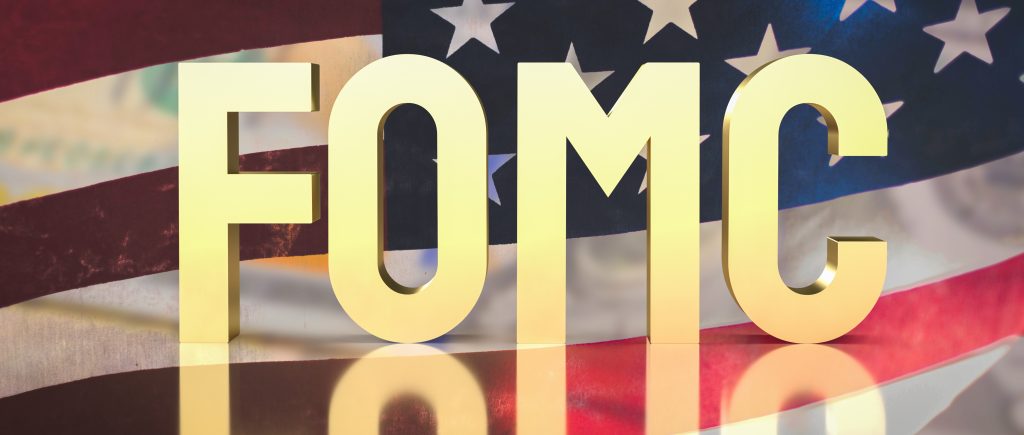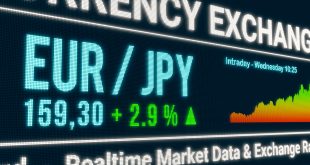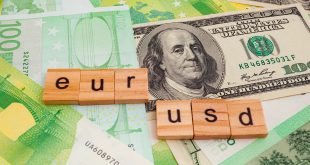Navigating by the seat of their pants – that’s a less charitable way to characterize the Federal Reserve’s recently professed reliance on real-time data for policy decisions. While we could extend some acknowledgement to Fed Chair Jerome Powell and his team, it’s apparent that the central bank is gently decelerating its tightening agenda without sounding the victory horn on inflation just yet – and for valid reasons. This suggests that a potentially hawkish undertone is in the cards, which could favour the US Dollar.
Let’s dive into a sneak peek of the Federal Reserve’s verdict scheduled for this Wednesday at 18:00 GMT.
The Fed’s Unease Over Persistent Inflation and Resilient Consumers
For the past eighteen months, the world’s most influential central bank has been locked in a battle against inflation. Their efforts have borne some fruit. The Consumer Price Index (CPI), which gauges inflation, has ebbed from a zenith of 9.1% YoY in June 2022 to a trough of 3% in June 2023. Yet, it has rebounded to 3.7% YoY in August.
The Fed wields more influence over costs associated with various goods, services, and housing, whereas energy and food prices, determined on global markets, remain outside their direct purview. The Core CPI, excluding volatile items, has retreated from its pinnacle of 6.6% YoY in September 2022 to a fresh low of 4.3% in August.
However, the Fed’s aspirations hover around the 2% mark. The recent 0.3% surge in Core CPI MoM triggers unease as it outstrips the preceding months’ increments. It underscores that price pressures haven’t been vanquished – at least, not yet.
Uncertainty casts its shadow over other data points too. Beyond inflation, the Fed is charged with fostering full employment. While the most recent Nonfarm Payrolls reports portray a moderation in job growth, wage growth remains elevated at 4.3% YoY.
Consumers, accounting for roughly 70% of the US economy, show no sign of relinquishing their shopping spree. The last two retail sales reports reveal robust expansion rates – 0.6% in August and 0.5% in July.
House prices dipped by 1.2% YoY in June, according to the Case Shiller House Price Index (HPI), but this data consistently surpasses expectations.
The Federal Reserve has already increased interest rates within the range of 5.25%-5.50%, albeit gradually reducing the pace of hikes. They paused this process in June, marking the first time in over a year. Subsequently, they raised borrowing costs in July, hinting at an unofficial shift toward hiking rates every other meeting for the remainder of the year.
The Rate Decision and Glimmers of the Next Meeting in November Top the List of Expectations.
Three Pivotal Factors Influencing the Fed’s Decision:
1) No Immediate Rate Hike, but Likely Hints for November
It’s highly probable that the Fed will leave interest rates untouched at 5.25%-5.50%, adhering to their well-established communication with the markets. Chair Powell and the team are not ones to spring surprises on investors, and the no-hike scenario is already factored in.
However, the real intrigue lies in what follows, particularly the “dot plot.” The September meeting introduces fresh projections, officially referred to as the “Summary of Economic Projections” or simply “dot plot.” Members of the Federal Open Markets Committee (FOMC) each provide their estimates for economic growth, employment, inflation, and interest rates.
Markets have an affinity for numerical data over words, and the expected interest rate for the end of 2023 carries significant weight. In the previous Fed projections back in June, the median estimate was 5.6%, signifying two rate hikes above the then-current level. With one hike already executed in July, maintaining the figure at 5.6% would imply the Fed is far from finished – or, at the very least, reluctant to concede it at this juncture.
Bond markets are presently pricing in only a 30% likelihood of a hike in November. Should the 2023 projection remain unaltered, there’s room for yields to ascend, bolstering the US Dollar while exerting downward pressure on stocks and Gold.
One should anticipate Powell leaving the door ajar for further moves, especially given the recent encouraging economic data.
2) Fewer Anticipated Cuts in 2024 Could Boost the US Dollar’s Momentum
The Fed and investors are already peering into next year, anticipating a backdrop of lower inflation and a decelerated economy that could catalyze interest rate reductions.
The June dot plot pointed to a median borrowing cost of 4.6%, a whole percentage point – equivalent to four standard 25 bps cuts – below the bank’s prior projection for 2023.
Here, investors and the Fed seem to be on a similar wavelength. Bond markets anticipate the first cut in July 2024, coinciding with the fifth of eight decisions. This allows for four successive cuts during the latter part of the year.
The crucial question is whether the Fed’s median rate projection for 2024 will remain steady at 4.6%. I anticipate a slight upward revision, perhaps to 4.8%, which could unsettle investors. An improbable decline to 4.3%, as witnessed in the March dot plot, would buoy markets.
It’s important to underscore Powell’s likely emphasis – these projections aren’t binding commitments, and their relevance diminishes with their temporal distance. Nonetheless, markets crave certainty even in the midst of uncertainty.
3) Fed Chair Powell’s Likely Hawkish Tone
The Fed announces its decision and issues an accompanying statement at 18:00 GMT, with the “dot plot” poised to overshadow any textual changes – which were relatively minor during the previous release. The final word rests with Chair Powell, who commences his press conference at 18:30 GMT.
Returning to the outset of this preview, the influential central banker will probably underscore the Fed’s reliance on incoming economic data, preserving the flexibility to adjust rates as necessary. However, the tone he adopts can wield substantial influence. If the focus leans toward combating inflation, it could dampen market sentiment, leading to declines in stocks and Gold but boosting the US Dollar.
Should Powell express apprehensions about the economy – citing weaknesses in the Chinese economy, revisions to past employment gains, or subdued PMIs from S&P Global – the US Dollar might emerge as the sole casualty. Nonetheless, this scenario appears unlikely given the recent string of positive figures, including resurgent inflation in services and housing.
To round off, consider one final hawkish indicator – the ISM Services Purchasing Managers’ Index (PMI), a highly regarded forward-looking gauge for the largest sector, suggests signs of resurgence with a score of 54.5 in August.
Concluding Remarks
The Federal Reserve appears poised to maintain its existing interest rates while signaling the potential for one final adjustment this year, along with a slower pace of cuts in the year to come. Their steadfast commitment to taming inflation, even at the cost of market disruptions, is likely to impact financial markets and lend strength to the US Dollar.
 Noor Trends News, Technical Analysis, Educational Tools and Recommendations
Noor Trends News, Technical Analysis, Educational Tools and Recommendations





